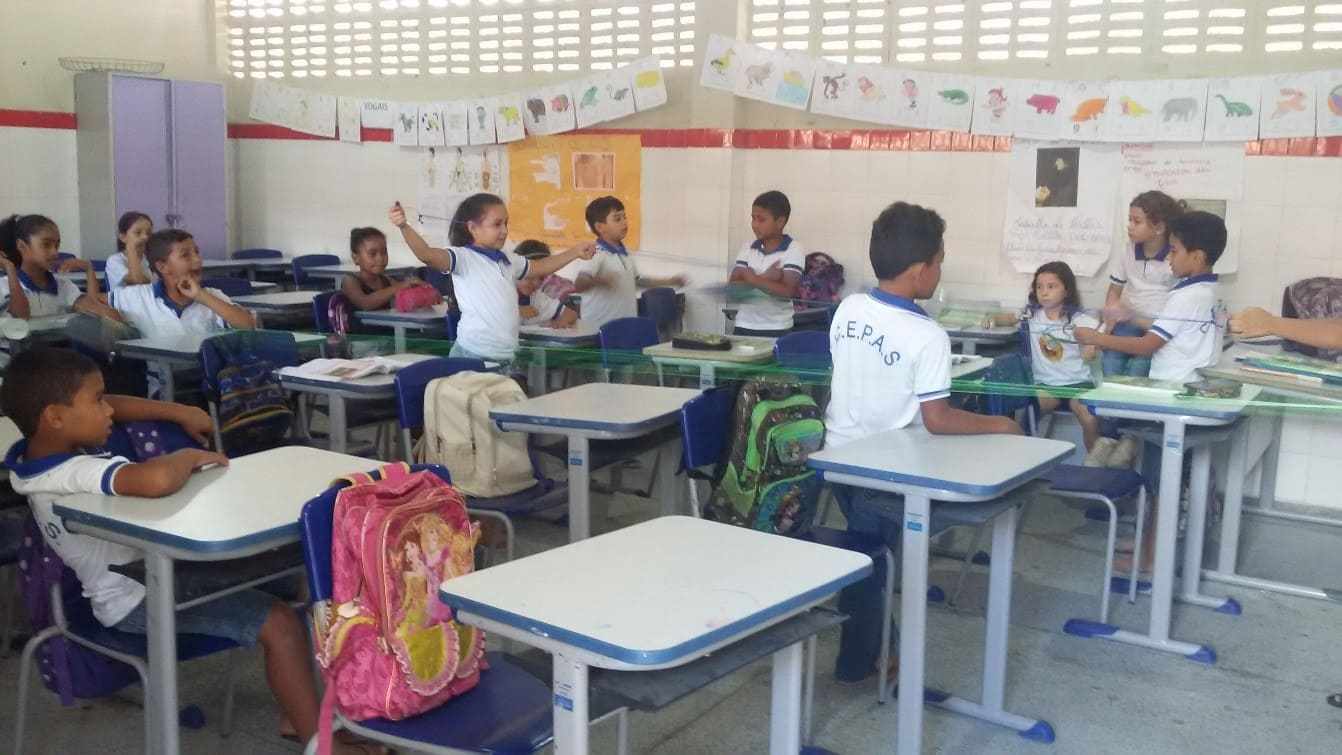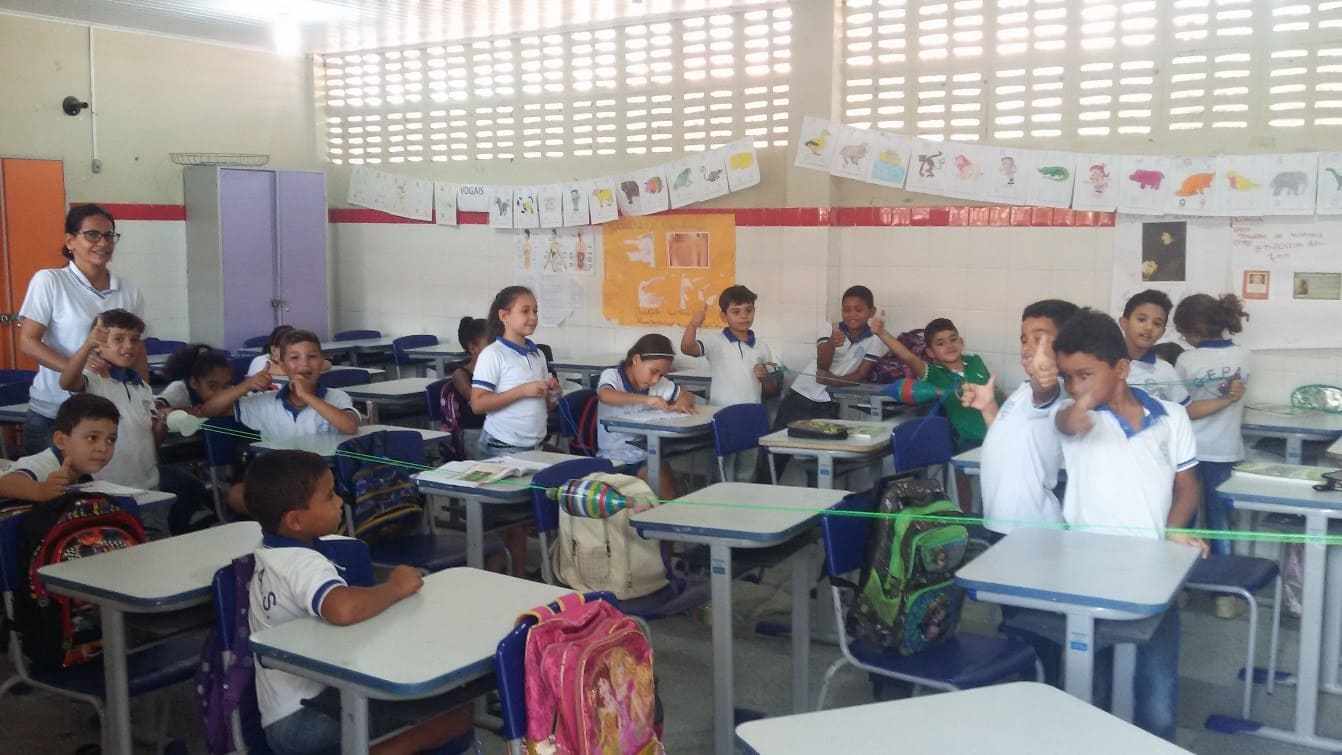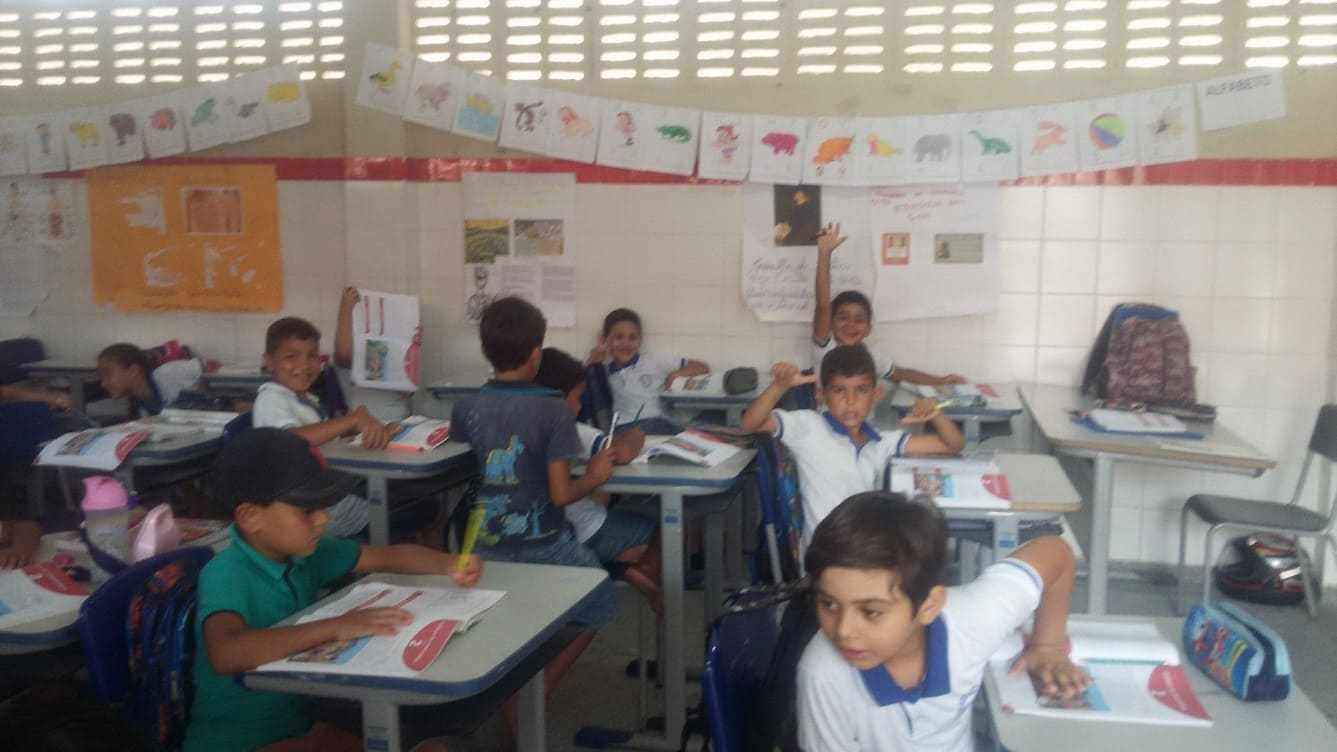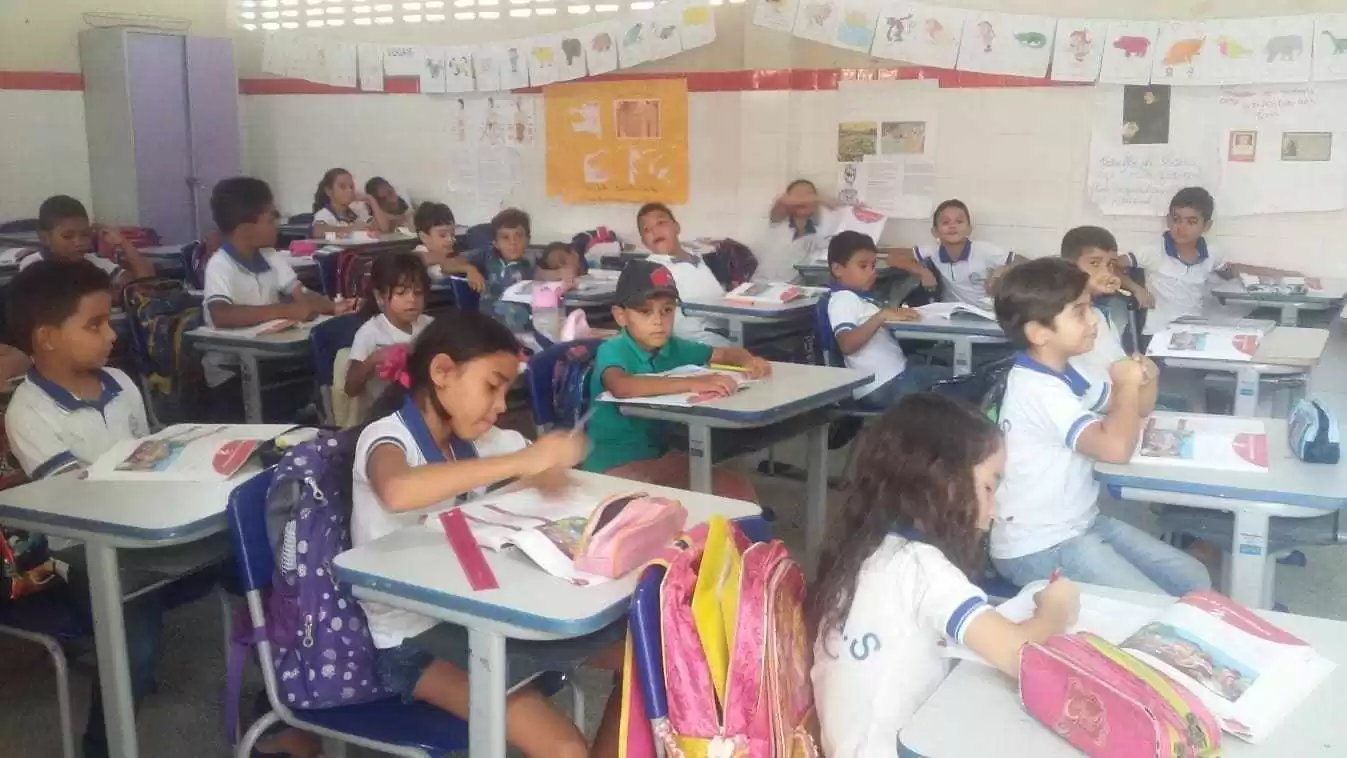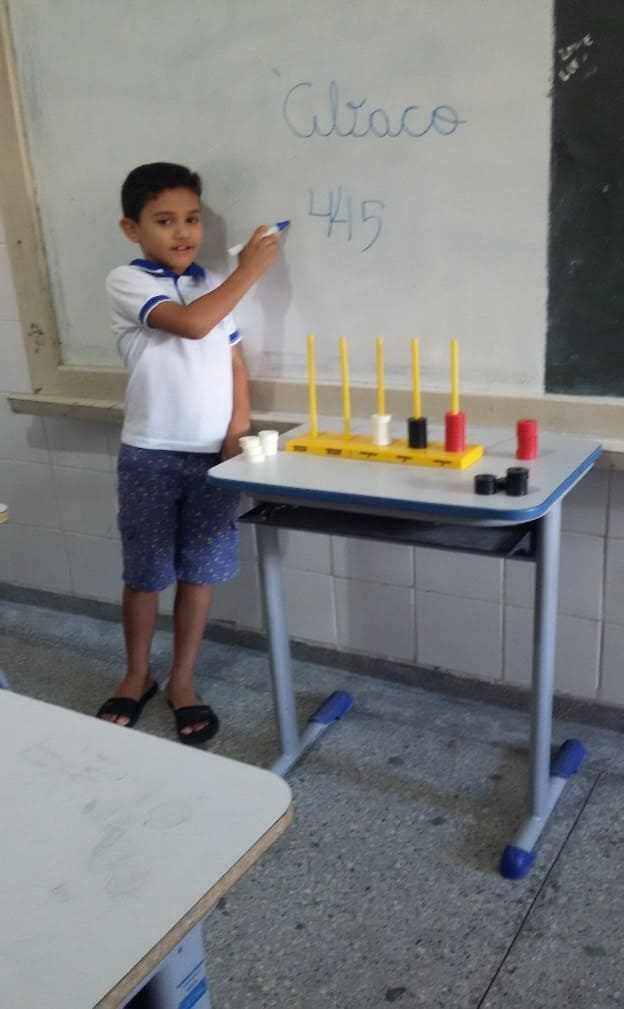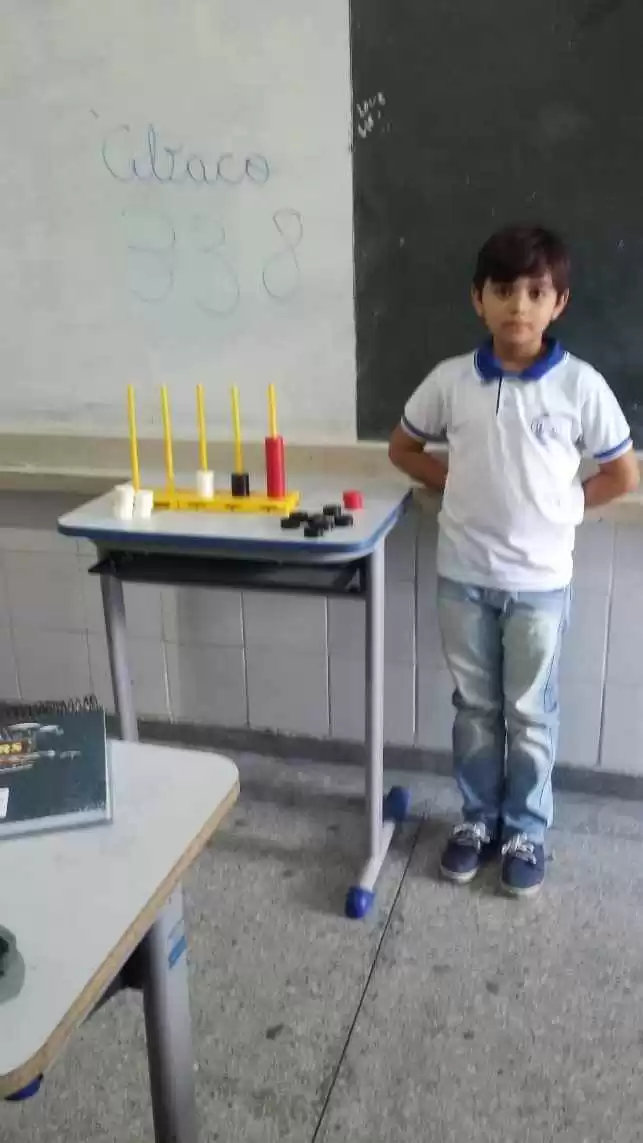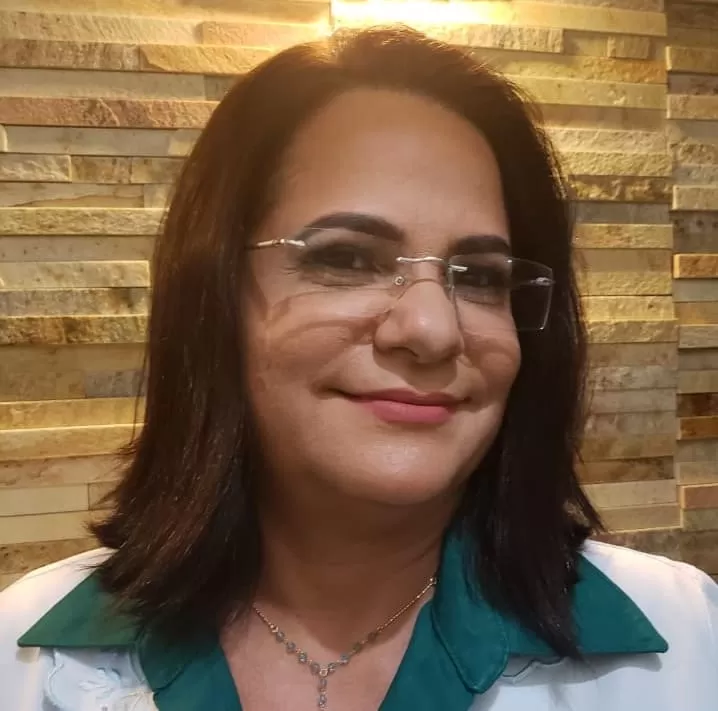ORIGINAL ARTICLE
ARAÚJO, Nadjane Melo Albuquerque [1], OLIVEIRA, Nadja Lucia Melo Albuquerque [2], OLIVEIRA, Manoel Messias Albuquerque De [3]
ARAÚJO, Nadjane Melo Albuquerque. OLIVEIRA, Nadja Lucia Melo Albuquerque. OLIVEIRA, Manoel Messias Albuquerque De. The importance of play in the initial series: Case study. Revista Científica Multidisciplinar Núcleo do Conhecimento. Year 05, Ed. 06, Vol. 01, pp. 191-213. June 2020. ISSN: 2448-0959, Access link: https://www.nucleodoconhecimento.com.br/education/case-study
SUMMARY
Introduction: The present study was born from the need to create learning strategies in order to improve the environment and content in a pleasurable way so that students feel desires to return to school. Objective: To enable meaningful and pleasurable learning stimulating the child’s potential. Methodology: This is a field research study, qualitative, quantitative, analytical, prospective and cross-sectional. With a sample of 27 elementary school students (3rd year) aged between 8 and 10 years. The research was carried out at the Pedro Alves de Souza State School, Lagoa da Volta village, Folha Sergipe Port, in a period of 9 months (March to December). Playful activities (word hunting, abacus, shuttle) were developed for the teaching of Mathematics, Portuguese and Sciences. Results: Forty activities were carried out in the discipline of mathematics, 60 activities in the discipline of Portuguese and 40 activities in the discipline of science. In the mathematics course of the 40 activities all students completed the tasks. In the discipline of Portuguese of the 60 activities, 35 were completed and 25 failed to complete. In the science discipline of the 40 activities, 38 were completed and 2 failed to complete. Conclusion: Therefore, the playful as an auxiliary tool in the construction of pedagogical practices, will allow the student a better assimilation of the contents without the weight of the obligation to perform the tasks, through the playful the child learns with joy and pleasure.
Keywords: Play, toy, playful, learning, pleasure.
1. INTRODUCTION
There are historical records that primitive man made use of various utensils for his communication and survival. When they scribbled images or traces in caves, they were practicing communication in a playful way. Games, games and dances are symmetrical to pleasure and learning. According to Huizinga (1971, p.07): “In primitive societies the activities that sought to meet vital needs, survival activities such as hunting, often assumed the playful form”.
In the current conjecture, students live in a globalized world of different social circumstances. Even those separated by centuries, the playful still preserves the magic of enchanting and giving pleasure to the most arduous tasks such as teaching and learning, just as it enchanted the Neanderthal (HUIZINGA, 1971, p.07).
Fortuna comments (2011, p.11) that: in addition to interaction, play and play increase students’ creativity and abilities, contributing to affective, psychological, cognitive and motor development. In this sense, santos (1997, p.12) adds, “Ludicity is a need of the human being at any age, not only as a diversion”.
In this process of evolution of teaching, it is valuable to intensify games and games to strengthen the performance of children’s culture, valuing the acquired experiences that contribute to the formation of your personality, making you a being capable of reconstructing your history. (KISHIMOTO, 1996).
It is a fact that education promotes the integration of the student in the social, community and school universe, as well as the construction of a vision of the universe that surrounds it. The activities carried out by the educator will enable the educator to know the characteristics of the learner, their potentialities and difficulties, and will support him in the development of strategies that promote the development of these potentialities and the overcoming of difficulties through playful activity (ILLICH, 1976).
Thus, this research presents as a relevant role for society, because it is expected to provoke concerns, paradigm changes, new learning and knowledge reconstruction, aiming to include a favorable model for learning, as well as, making them critical and active in the society of which they are part. (DRUMONT, 2003).
Therefore, classroom games should not be seen as time passes, which behind such simple actions hides a pedagogy focused on learning and cognitive, psychic and motor development of the student.
2. RESEARCH PROBLEM
How playful facilitates the learning teaching process in children
3. JUSTIFICATION
The play in the school environment will provide students with the development of orality and thought, making them able to seek solutions to the difficulties, as well as in the interpersonal relationship that allows the student to understand the meaning of mutual respect. Thus, there is a prospect of improvement in school performance and consequently a broad and significant learning.
4. GOALS
5. GENERAL OBJECTIVE
The importance of play as an integral part of pedagogical practice in the teaching learning process.
6. SPECIFIC OBJECTIVES
- Stimulate the child in its development;
- Create strategies to facilitate learning;
- Develop the child’s interest in content;
- Improve school attendance index;
- Facilitate interaction between students, teachers and colleagues;
- Enable meaningful and enjoyable learning.
7. THEORETICAL FRAMEWORK
8. THE PLAYFUL IN THE EARLY YEARS
The playful as part of the process of construction of pedagogical practices in the initial series, represents an educational proposal for the development of the child and essential for discoveries of new knowledge. Thus, it is an important tool to guide actions and planning of activities (DANTAS, 1998).
For Vygotsky (1984), play is important for the formation of children’s thinking and that, through games and games, the child develops cognitive, visual, auditory, tactile and motor skills, which contribute to an interpersonal relationship, making discoveries and relating symbols.
Vygotsky (1984, p.114) states that: “It is from play that the child constructs his own thought”. For Kishimoto (1993), the toy has a playful and educational function, provides fun, pleasure and even displeasure, and completes in the individual the understanding of the world. Vygotsky, (1984, p.114) adds later: “play creates for children a “proximal development zone” that is nothing other than the distance between the current level of development, determined by the ability to independently solve a problem”.
Currently, despite the multiple intellectual stimuli that electronic toys provide to children, one must take into account the deficit of motor development and interpersonal relationships, the child begins to no longer interact with the social environment, becomes subject to the interaction of the media. According to Dallabona and Mendes (2004, p.06): “It is necessary to break some paradigms and understand that toys are an investment in healthy children from the psychosocial point of view”.
9. THE PLAYFUL IN THE PROCESS OF COGNITIVE AND MOTOR DEVELOPMENT
Playfulness is fundamental for the development of children’s motor and cognitive skills, games such as football, hopscotch, dominoes, chess, rope jumping, word hunting, among others, stimulate global development and provide an active and healthy lifestyle. Kamii (2001, p.15), points out that: “entertainment develops mathematical logical reasoning, through them, children are motivated to counts, to addition”, among other contents.
It is noteworthy that the family constitutes the first context of education and care of an individual. In it the child receives material, affective and cognitive care necessary for his well-being and thus build his first ways of meaning the world and things. When the child begins to attend early childhood education, it is necessary to reflect on the specificity of each context in the child’s development. According to Gabriel Chalita, (2001, p.17) “No matter how good a school, it will never supply the need for an absent family.” Portanto, a família deve assumir o papel que lhe é outorgado no processo educativo.
10. PLAY COLLABORATES IN LEARNING
Playing causes in the child numerous sensations such as representation, imitation, daily life or situations previously experienced in individual and social issues, in short, promotes new experiences, which raises a learning accompanied by pleasure. For Cunha, (1994, p.67): “Playing, the child experiences, discovers, invents, exercises and confers his skills”.
According to Furth, (1974). The play makes the child a brilliant being, able to transmud it into a giant in the search for problem solving. For him, the child who plays, lives a happy childhood and turns into a much more balanced adult in the physical and emotional. Therefore, this child in adulthood will be able to overcome the problems more easily.
According to Wallon (1979), the playful in early childhood education can be worked in all activities, therefore, it is a way of learning and teaching awakening pleasure, and thus, learning takes place. In this new construction of knowledge the child builds new skills.
According to the aforementioned author, the playful enables the construction of knowledge in an intrinsic and necessary way for a good learning. Thus, learning is established in the child until adulthood and this experience converts mature adults, self-confident and more prepared for the challenges imposed by society.
The playful is an indispensable ingredient in the relationship between people, stimulating creativity. Games and games, in their existence, are intertwined with the phases of human life in personal, social and cultural development, providing good mental health, facilitating communication, expression and the construction of knowledge (PIAGET, 1976).
Play constitutes for the child a means of socialization, offering them opportunities to perform collective activities, in addition to obtaining positive effects on learning. Cognitive, affective and social stimuli are attributed through play. For Wallon, (1979, p.81) “The child learns a lot by playing.”
The playful, when used correctly, provides the educator with opportunity and educating, learning moments in multiple aspects, favoring the development of creative potentialities. It must be faced in a serious, competent and responsible way, because “playful activity is the cradle of the child’s intellectual activities” (PIAGET, 1976, p.160).
11. PLAY IS IMPORTANT AT ANY AGE
The playful presents specific values for all the makes of human life, be it in childhood or adolescence, the purpose is essentially pedagogical. According to Neves (2009), the child creates a resistance to school and teaching because it is not pleasurable since it is not presented in a playful way. It is provided by the federal constitution that every child has the right to play and it is the duty of public authorities and society to ensure that right. Antunes (2005, p.34) says that: “It was from the 16th century that humanists began to value the educational game again, realizing the importance of the playful process in the formation of the child.”
Playful education represents an indispensable tool for education. According to Santos, (2008, p.182). “Playfulness is a need of the human being at any age, where it facilitates learning and development in any aspect, be it: cultural, personal, social or mental.” In early childhood education, the child constructs learning through play, creating illusions between the real world and his fantasies.
The playful activity prepares the child for life, so that it inserts it into the culture of the environment in which it lives, learns to compete, cooperate and work as a team, transforming it into a social individual. Thus, teachers are not mere transmitters of systematic information and knowledge, but mediators of this knowledge. (FREIRE, 2001).
Knowledge must be opportunistic through playful activities, so that the child develops knowledge about themselves autonomously. Since, the methodologies based on games facilitate learning and enable the strengthening of the imaginary in the construction of your world. According to Friedmann (1996), The benefit is mutual for the teacher and for the student, through the exchanges of learning.
12. METHODOLOGICAL FRAMEWORK
13. TYPE OF STUDY
This is a field research, qualitative, analytical, prospective and cross-sectional study. Initially those responsible for the students will be informed about the application of the survey questionnaires and will sign a Free and Informed Consent Form. Students from the 3rd year of elementary school participated in the research.
In order to validate the research, three questionnaires were applied, under the supervision of the coordinator of the State College Pedro Alves de Souza, to the students, parents and coordinator to minimize possible biases about the research. The participants were explained in detail about the purpose of the questionnaire.
14. DATA COLLECTION INSTRUMENTS
The instruments used for data collection were the questionnaires applied to students, parents and coordinator.
15. POPULATION AND SAMPLE
School of the public network of the State College Pedro Alves de Sousa, located in the square José Francisco de Sá S/N in the village Lagoa da Volta in the municipality of Porto da Folha-Se, in the 3rd year of minor elementary school. The class consists of 27 students, 15 boys and 12 girls, aged between 8 and 10 years.
16. STRATEGIES FOR BUILDING ACTIVITIES
17. PORTUGUESE
Images were made that represented the four forms of the letters of the alphabet (cursive, form, upper and lower case), the students participated in the entire construction process. Then they exposed it on the wall to better identify the letters when there were doubts in the construction of the words.
Way to play
The game was similar to “adedonha” the teacher pointed to the letter that was exposed on the wall and the students spoke words that started with the letter pointed. One detail, I couldn’t repeat words.
After becoming familiar with the alphabet, the process of building simple syllables began;
The students were divided into groups, and each group was given a family of syllables to form words;
Each group was attentive to the word spoken by the teacher. Example: Duck, the P and T family group would go ahead to form the word. Everyone was attentive to the words to position themselves correctly, if they positioned the syllables incorrectly, the student was instructed to make the correction. It is clear that within a simple pedagogical approach several contents are worked. That is, with this joke, the recognition of letters, syllables and reading words was worked.
18. MATH
In the mathematics discipline, the instrument used was the abacus, to learn the positional value of each number. The 1st, from right to left, represents the unit, and the posteriors represent the tens, hundred, thousand unit, and so on. It was explained to the student how much represented each number according to the positional value.
At the abacus each row can only get 9 balls. Because if you have ten (10) balls for example in the unit, it ceases to be a unit and becomes ten, and if you have ten (10) balls in the tens, it ceases to be ten and becomes a hundred and so on.
In the next step it was taught that in the unit house each ball is worth one (1).
In the house of the dozen each ball is worth ten (10).
In the hundred of the hundred each ball is worth one hundred (100) and so on.
Way to play
One student is called at a time to participate in the play of the numerals, and the rest are waiting for their turn and cannot speak the answer to the colleague. The teacher (mediator) dictates a numerical value and the student is instructed to place the balls in the respective positions and in turn read and write the numeral on the board. The mediator reports to the class asking if the value is right or wrong and, considering a mistake, how it could fix. So they can understand and understand the world of numerals.
Therefore, the abacus is a playful facilitating instrument that assists the teacher in the act of teaching and a toy for students that facilitates learning. The union of these factors enables a joyful and pleasurable interaction that facilitates learning, contributing to the improvement of calculus skills.
19. SCIENCES
To teach the contents of science were worked as follows: The teacher set up three teams with 07 students and a team with (06) six students. With the teacher’s guidance, the students made a toy called VaiVem. The ornaments were diverse! They used a lot of creativity.
Material Used:
2 peti bottles of 2 liters;
Nylon cord;
Colored ink;
Colored adhesive tape;
Transparent crepe tape.
After it was done, the students started playing and during the game, the teacher began to ask questions about the preservation of the environment and health of the human body (motor coordination).
- What material was used?
- How does the use of this material contribute to the preservation of the environment?
- What body members are you moving?
- For The Go-Come to work, do you have to make what moves?
20. ANALYSIS OF THE RESULTS
- Sixty activities were carried out in the discipline of Portuguese, 40 activities in the discipline of mathematics, and 40 activities in the discipline of science.
- In the mathematics course of the 40 activities all students completed the tasks.
- In the discipline of Portuguese of the 60 activities, 35 were completed and 25 failed to complete.
- In the science discipline of the 40 activities, 38 were completed and 2 failed to complete. As per Chart 1 below:
Figure 1: Activities by discipline
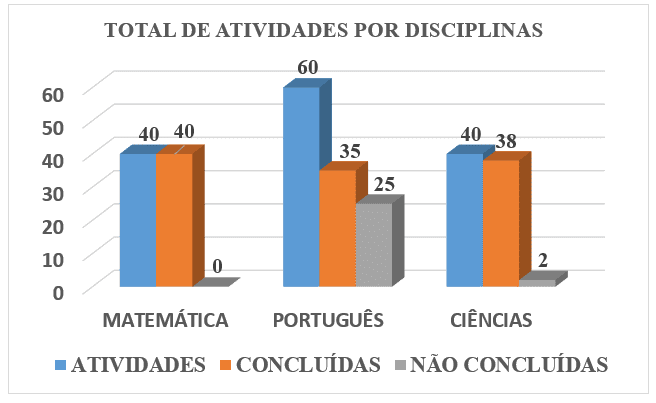
Figure 2: Portuguese Activities
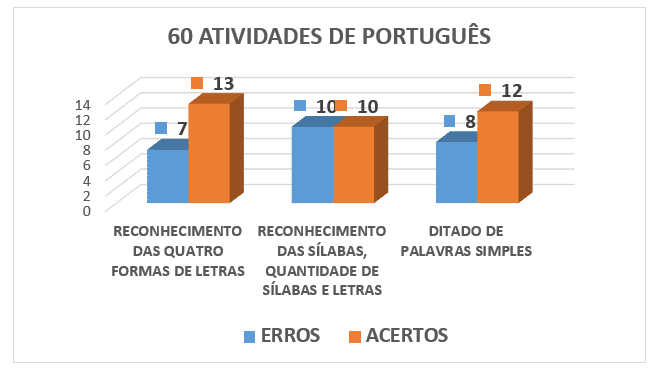
Graph 3. Math Activities
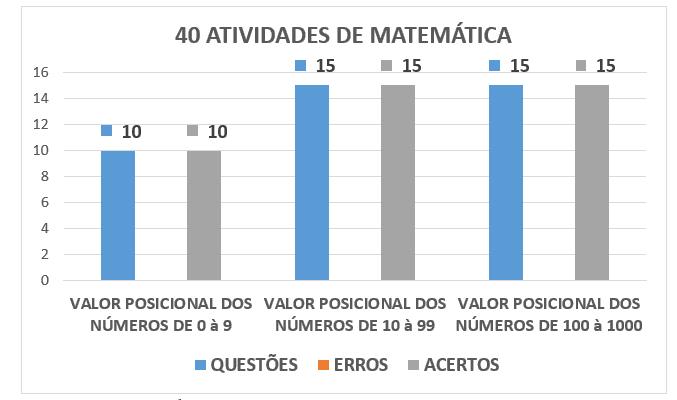
Figure 4: Science Activities
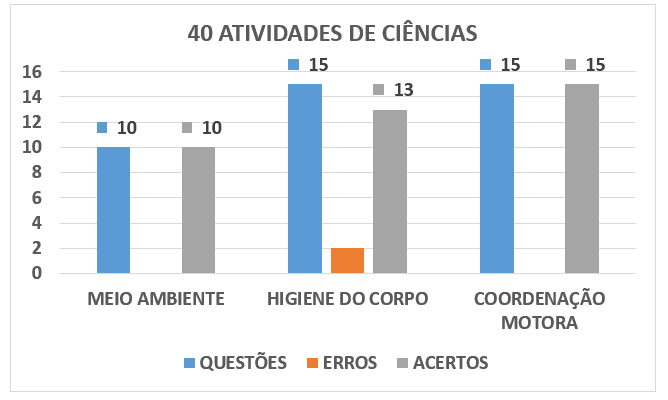
It was verified that in the discipline of Portuguese according to (Graph 2) the applied content of recognition of (4) four forms of letters, the students obtained (13) thirteen correct answers and (7) seven errors when they answered their tasks. In the content of recognition of simple syllables, amounts of syllables and amount of letters, the students performed 20 activities with (10) ten correct answers and (10) errors. In the activities of simple words there were (12) twelve correct answers and (08) errors.
In the mathematics course presented in (Graph 3) of the (40) forty activities correctly all.
In the science discipline represented in (Graph 4) the students performed (40) forty tasks, in the environmental content there were (10) ten correct answers. In the hygiene content of the body were (13) thirteen correct answers and (02) errors. In the content of motor coordination there were (15) fifteen correct answers.
Figure 5: Student Achievement
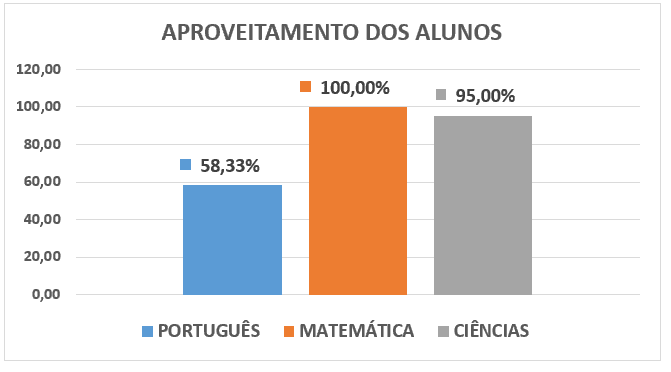
According to (Graph 5) it is clear that there was a significant and positive use with the insertion of play in the disciplines of Portuguese, mathematics and sciences, ratifying an efficient and effective methodology. As well, the playful brought a positive atmosphere among teacher, students, parents and school management team.
21. CONCLUSION
In any discipline the active involvement of the student is a fundamental condition in learning, the teacher needs to know well his students and create with them a good learning environment so that the attacks can be carried out successfully. Educators should consider play as a partner in the teaching learning process, through play children demonstrate their emotions and establish relationships with the environment, learn, share, win and lose, constituting their personality.
In addition to contributing to the acquisition of new knowledge, the playful creates a mutual relationship, develops language, attention, perception, creativity and skills to better develop learning. With playing and playing the child will have the opportunity to develop their skills, because when playing, their learning evolves in a pleasurable way.
Therefore, toys, games and games are indispensable tools in the development of learning teaching.
22. REFERENCES
ANTUNES, C. jogos para a estimulação das múltiplas inteligências: os jogos e os parâmetros curriculares nacionais. Campinas: Papirus,2005. p.34.
LDBEN- Lei de Diretrizes e Bases da Educação Nacional. Lei nº 9.394/96 de 20 de dezembro de 1996.
CHALITA, G. Educação, a solução está no afeto. São Paulo: Editora Gente, 2001, p.17.
CUNHA, Nyelse Helena Silva. Brinquedoteca: um mergulho no brincar. São Paulo: Maltese, 1994, p.67.
DALLABONA, Sandra Regina; MENDES, Sueli Maria Schimit. O lúdico na educação infantil: jogar, brincar, uma forma de educar. Revista de divulgação técnico-científica do ICPG, v. 1, n. 4, 2004, p.06.
DANTAS, H. Brincar e Trabalhar. In: KISHIMOTO, T. M. (org). Brincar e suas teorias. São Paulo: Pioneira, 1998, p.111.
DRUMMOND, Carlos. Brincar e aprender: a importância do lúdico para as crianças pequenas. Pátio: Grupo A Editora, Porto Alegre, 2003, p.99.
FORTUNA, T.R. O Lugar do brincar na educação infantil. Revista Pátio Educação Infantil, ano IX, n.27,abr / jun.2011 ( 2011), p.11.
FREIRE, Paulo. Pedagogia da Autonomia. Saberes necessários à prática educativa. Coleção leitura. Editora Paz e Terra, 2001,17 ed, p.44.
FRIEDMANN, Adriana. Brincar: Crescer e aprender – o resgate do jogo infantil. São Paulo: Moderna, 1996, p.55.
FURTH, Hans G. Piaget e o conhecimento: fundamentos teóricos. Trad. Valerie Rumjanek. Rio de Janeiro: Forense-Universitária, 1974, p.18.
HUIZINGA, Johan. Homo ludens: o jogo como elemento da cultura. Trad. João Paulo Monteiro. São Paulo: Perspectiva; Edusp, 1971. p.07.
IILICH, I. Celebração da consciência. 2. ed. Petrópolis: Vozes, 1976, p.23.
KAMII,C; DECLARCK,G. Reiventando a Aritimétrica, aplicaçõse da teoria de Piaget. Porto Alegre, RS,2001, p.15.
KISHIMOTO, T.M. Jogos infantis: o jogo, a criança e a educação. Petrópolis, RJ: Vozes,1993, p.108.
KISHIMOTO, Tizuco Morchida. O Jogo e a Educação Infantil: In: KISHIMOTO, Tizuco Morchida. Jogo, Brinquedo, e a Educação. São Paulo: Cortez,1996, p.26.
NEVES, Libéria Rodrigues; SANTIAGO, Ana Lydia. O uso dos jogos teatrais na educação: possibilidades diante do fracasso escolar. 2. ed. Campinas: Papirus, 2009, p.45.
PIAGET, J. Aprendizagem e conhecimento. Rio de Janeiro: Freitas Bastos, 1976, p.160.
______. Psicologia e Pedagogia. 3. ed. (Trad. D. A. Lindoso e R. M. R. Silva). Rio de Janeiro: Forense-Universitária, 1976. (Orig.: 1969), p.160.
SANTOS, Santa Marli Pires dos. O lúdico na formação do Educador. 6ª ed. Petrópolis, RJ: Vozes, 1997, p.12.
SANTOS, Santa Marli Pires Dos. Brinquedoteca: a criança, o adulto e o lúdico. 6. ed. Petrópolis: Vozes, 2008. p. 182.
VYGOTSKY, L.S. A formação so FREIRE, J. B. Educação de corpo inteiro. São Paulo, Scipione, (1984), p.114.
VYGOTSKY, L. S. A Formação Social da Mente. 6. ed. São Paulo: Martins Fontes Editora LTDA, 1998.
WALLON,H, ( 1995). Psicologia e Educaçõa da Infância. Lisboa: Estampa (1979) do acto ao pensamento. Lisboa: Moraes ( 1979), p.81.
APPENDICES
QUESTIONNAIRE APPLIED TO COORDINATOR
School:___________________________________________________________________________________________________________________________________________________________________________:______________________________________________________________________________________________________________________________________________________________________
Working Time:_________________________________________________________________________________________________________________________________________
Working time at the current school:_____________________________________________________________________________________________________________
- Do recreational activities help in the construction of students’ knowledge?
( ) Yes ( ) No
- What are the positive points of the use of recreational activities in Education?
- Do playful activities in the classroom facilitate the relationship between theory and practice?
( ) Yes ( ) No
- Do classroom play activities favor the construction of concepts and the socialization of students?
( ) Yes ( ) No
- With the insertion of games in the 3rd year improved the behavior of the students?
( ) Yes ( ) No
- Do play favor the inclusion of children with special needs?
( ) Yes ( ) No
- Students learned more easily in teaching:
( ) Traditional ( ) Using the playful
- Is it important to work with the playful?
( ) Yes ( ) No ( ) Maybe
- What does play provoke in students?
( ) Pleasure, joy ( ) Displeasure, sadness
- Does play help to develop cognitive, affective and motor aspects in students?
( ) Yes ( ) No ( ) Maybe
- Has play improved the interaction between students?
( ) Yes ( ) No
12-Has there been an evolution in student learning?
( ) Yes ( ) No
13- Was there an improvement in the participation of students in educational activities?
( ) Yes ( ) No
QUESTIONNAIRE APPLIED TO STUDENTS
School:___________________________________________________________________________________________________________________________________________________________________________:______________________________________________________________________________________________________________________________________________________________________
Series:___________________________________________________________________________________________________________________________________________________________________________
- Do you like to learn by playing?
( ) Yes ( ) No
- With the images of the figures and the four shapes of the letters exposed on the wall facilitated the identification of the letters?
( ) Yes ( ) No ( ) Maybe
- With the word games did you learn better the syllables, numbers of syllables and amount of syllables and letters?
( ) Yes ( ) No ( ) Maybe
- With the abacus do you understand better the numbers and their value according to the position you occupy?
( ) Yes ( ) No ( ) Maybe
- Do you like to do activities just by copying by the board?
( ) Yes ( ) No
- When the teacher teaches you with games do you feel like leaving?
( ) Yes ( ) No
- When the teacher teaches with games do you feel like coming back the next day?
( ) Yes ( ) No
- When the teacher tells a story imitating the character do you pay attention to the story and the movements of the teacher?
( ) Yes ( ) No
09- With the shuttle toy made by you, and with the guidance of the teacher you learned better what contents?
( ) Coordination ( ) Articulation ( ) Recycling ( ) nothing
10- The materials used to make the shuttle toy were:
( ) Purchased ( ) Recycled
11- Did you like the toy?
( ) Yes ( ) No
QUESTIONNAIRE APPLIED TO PARENTS OR GUARDIANS
Parent:________________________________________________________________________________________________________________________________________________________________________
- Did your child show more interest in the studies?
( ) Yes ( ) No
- With respect to the previous year your child has developed more?
( ) Yes ( ) No
- What did you notice in your child’s face expression when he returns home?
( ) Joy, satisfaction ( ) Sadness, discouragement
- Does your child tell you that when he plays he learns?
( ) Yes ( ) No
- Have you noticed that your child is more participatory?
( ) Yes ( ) No
- Have you noticed that your child is more communicative?
( ) Yes ( ) No
- What do you think of the methodology of teaching by playing?
( ) Bad ( ) Regular ( ) Good ( ) great
- Do you think that games, toys and games inserted in the contents, improve development and learning?
( ) Yes ( ) No
- Does the methodology used by the teacher to insert the playful in the teaching learning develops the student? ( ) Yes ( ) No
ATTACHMENTS
Image 01 – Façade of the State College Pedro Alves de Souza – Lagoa da Volta /Porto da Folha/Sergipe
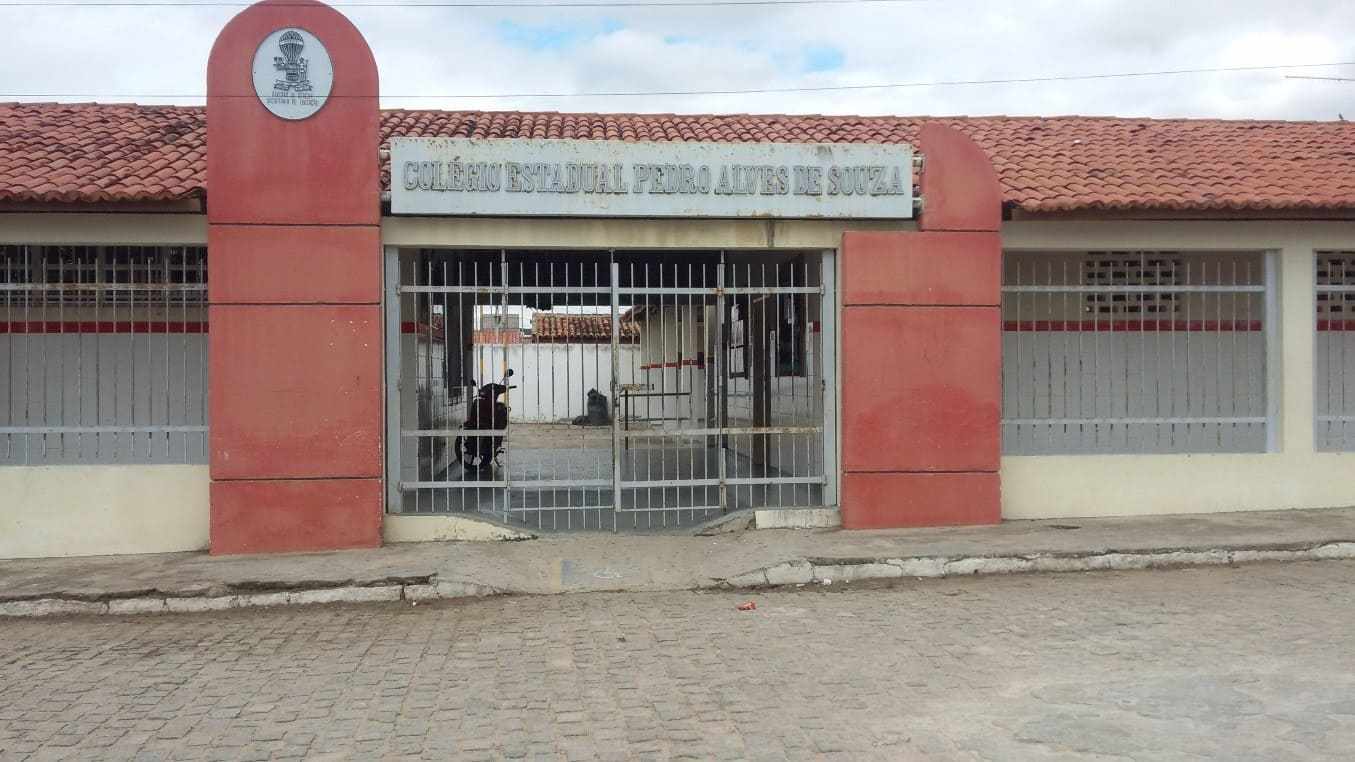 Image 02 – Science: Playful Activity: Toy Will Come
Image 02 – Science: Playful Activity: Toy Will Come
Image 03- Science: Playful Activity: Toy Will Come
Image 04 – Portuguese: Letters and images displayed on the wall.
Image 05 – Portuguese: Letters and images displayed on the wall.
Images 06 – Mathematics: Working with Abacus.
[1] Master’s degree in Educational Sciences (Inter-American University/PY); Lato Sensu postgraduate in Inclusive Education, from the Integrated College of Jaquarepaguá, Rio de Janeiro; graduated in Pedagogy (Vale do Acaraú Fortaleza University/Ceará).
[2] Master’s degree in Educational Sciences (Inter-American University/PY); Postgraduate in International Clinical Osteopathy from The Inspira Curitiba/Paraná College. Graduated in Physiotherapy from Estácio de Sá Aracaju/Sergipe College. Graduated in Pedagogy (Vale do Acaraú Fortaleza University/Ceará).
[3] Lato Sensu postgraduate in Institutional Psychopedagogy, at the Faculty of Administration and Business of Sergipe – FANESE. Degree in Portuguese/French from the Faculty of Teacher Training of Penedo/Alagoas (FFPP).
Sent: May, 2020.
Approved: June, 2020.
